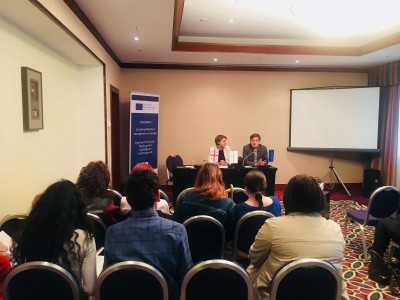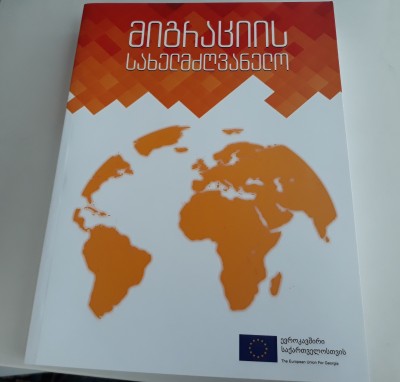An interdisciplinary Textbook on Migration was officially presented to the public
The publication created through the partnership of the Secretariat for the State Commission on Migration Issues and the International Centre for Migration Policy Development under the EU funded “ENIGMMA” project aims to put all pieces of studying migration puzzle in one entire picture to introduce to a reader a fascinating world of migration, its impact to all aspects of our lives and its perspectives for our future.
Starting with chapter on Migration as an Interdisciplinary Phenomenon, the textbook explains in details what aspects we need to consider when we discuss migration and why it is important to consider them. It is nearly impossible to fully engage into the studying one or another subject without a proper understanding of theoretical background behind this subject – this is why the textbook includes also two more important introductory chapters: The Main Forms of Migratory Movements which introduces the main definitions related to migration and an overview of Theoretical Frameworks of International Migration that explains what is migration actually.
The actual interdisciplinarity of migration is addressed in the textbook in a chapter - History of Migration: migration and development of our civilisation are two sides of the same coin and one would be not possible without another; therefore, the routes of such interaction must be accessed from the historical perspective. Science of Human Geography studies the relationship between human society and geographic environment in which people act, and as human society composition is broadly influenced by migration. Thus the textbook in a separate chapter is analysing the links between Human Geography and Migration. One more science which also studies development of society or population, more precisely – human reproduction and on-going societal-historical developments – is demography. The links between this science and migration as one of the demographic processes are described in the Statistics and Demography part.
The textbook presents Economic Aspects of Migration by equipping the reader with main principles and ideas of correlation between emigration and immigration and such economic categories as economic growth, inflation and exchange rate, labour market and human capital development, and others. The publications more generally analyses, the links between Migration and Social Sciences, focusing on migration and social structure which takes into account different institutions and norms constituting a society, existing stable and long-term linkages between values and social roles. The role of gender in characterizing migration streams in Georgia is discussed in Migration and Gender chapter. Legal Aspects of Migration were long considered as main measures available to manage migration; therefore it would be impossible to cover all migration categories without chapter on law. Finally, the social sciences part of the chapter is completed by discussing the public perception of migration – correlation between Migration and Media. This aspect of public life becomes increasingly important in every society.
The links between migration and public administration both on national and international level conclude the textbook. Further, state migration management is covered by chapter on Migration and Public Administration. Securitisation of migration is another globalisation consequence and it needs to be further discussed and accessed. This is done in chapter on Migration and Security.
“This book is not meant to provide definitive answers, nor does it claim to be complete. Its only aim is to trigger debate, and to provide the material on which such a debate could, or maybe should, be based”.
Humanitarian and Migration Law Professor Peter van Krieken




